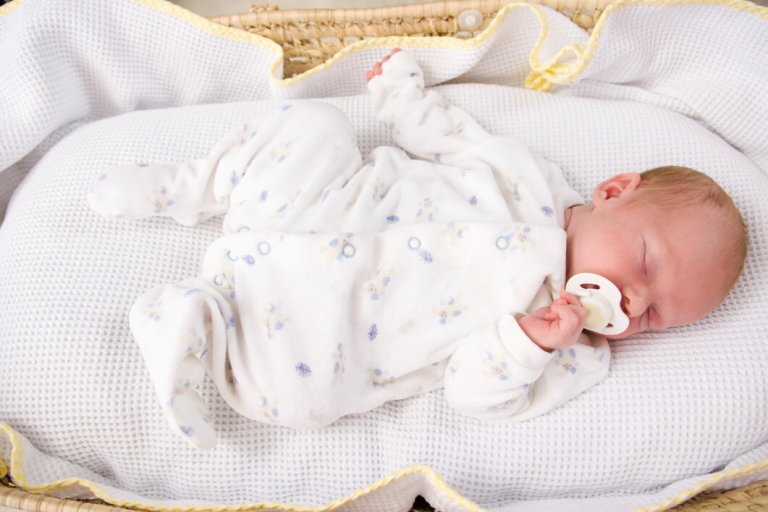How to Make a Bedtime Routine for Your Baby?

Make use of these tips to help establish your baby’s bedtime routine in a way that’s effective, convenient and pleasant.
Just like adults, babies are guided to a huge extent by their habits. This is even more true when it comes to sleep.
The first months of a baby’s life can be complicated for parents, especially in terms of time to rest.
An excellent solution for this dilemma is to actively participate in the formation of your baby’s sleep cycle by establishing a bedtime routine.
How can this be done?
In the first 4 or 5 months, babies sleep for around 16 to 20 hours a day. They don’t sleep continuously, rather they wake up periodically to feed and also to feel their mother’s contact which is important.
As the months go by, the number of hours that the baby needs to sleep will gradually decrease. When they reach the age of 9 months, they’ll sleep for approximately 14 hours a day.
In order to make their sleep cycle fit with that of the rest of the family, we can develop routines that will help the child adjust.
In other words, predictability and repetition can provide the stability their bodies need to develop in a healthy way.
Benefits of having a bedtime routine
One important reason for creating a bedtime routine is that it allows parents to match their baby’s sleep cycle to that of the rest of the family.
This essentially means sleeping at night and occasionally taking naps during the day. When it comes to babies, the latter is important.

As the months go by, the number of hours that the baby needs to sleep will gradually decrease.
Stability is what makes the baby feel more secure and loved.
Since they still don’t understand the concepts of space and time, having habits is what allows them to know that everything is going as it should. It also allows them to know their mother is there to protect them.
Stability also facilitates the inclusion of other activities. For example, if the baby knows that after feeding comes sleep time, as they grow you can also add the habit of brushing their teeth before going to bed.
How to establish a bedtime routine?
It’s no easy task, but with patience and determination, you’ll be able to achieve it. The perfect time to begin creating routines is between 6 and 8 weeks of life.
The routines formed at this time will allow your little one to feel more relaxed as they carry out predictable activities.
Aspects to consider in order to create a bedtime routine
- Allow the baby to use their energy playing games, walking around the house or dancing. This will make it easier to fall asleep afterwards.
- Progressively advance from energetic activities to calmer ones.
- Baths are an essential tool that can help form a baby’s sleep routine. Its warmth can be very relaxing. In addition, the feeling of going to bed clean is extremely pleasant.
- Try to create positive associations. In other words, going to sleep should be a pleasurable activity – not a reason for crying, shouting or kicking.
- Talk to them before bedtime. You can read stories to them or simply whisper calmly. There is nothing better than being in their parent’s company before going to bed.
The perfect time to begin creating routines is between 6 and 8 weeks of life.
A bedtime routine example
- Play and let them release as much tension as possible.
- Give the baby a warm bath. If this activity upsets the child too much, it’s better to give them a bath during the afternoon.
- Feed the baby.
- Take the baby to their room. The room should be quiet and as dim as possible to reduce their level of stimulation to a minimum.
- Speak to the baby in whispers. You can try telling a bedtime story or singing a lullaby.
- Rock the baby until they fall asleep. If that doesn’t work, you can place the child in the crib.

Although this might not be the definitive solution, it’s an excellent way to begin to adjust the baby’s sleep cycle.
It might not work the first time you try it, but with time you’ll see that in the long run it’s worth the effort.
There are other aspects that you should consider such as the baby’s sleeping position and environmental factors (light, temperature, the comfort of the bed, etc).
You can also use other routines that you find effective in helping them fall asleep.
Keep in mind that it’s important for children to acquire healthy lifestyle habits.
When it comes to helping them develop healthy habits, no age is too early. Everything can be achieved with patience and perseverance.
All cited sources were thoroughly reviewed by our team to ensure their quality, reliability, currency, and validity. The bibliography of this article was considered reliable and of academic or scientific accuracy.
- Bilbao, Á. (2017). Todos a la cama: Cómo ayudar a tu bebé a dormir con amor y confianza. Plataforma.
- Jové, R. (2006). Dormir sin lágrimas: dejarle llorar no es la solución. La esfera de los libros.
- Kimelman, M., & González, L. (2013). Psicopatología del bebé. Psiquiatría del Niño y del Adolescente, 2, 337-432. http://www.psiquiatriasur.med.uchile.cl/documentos/PSICOPATOLOGIA%20DEL%20BEBE.pdf
- Ugarte Libano, R. (2011). El sueño en el primer año de vida:¿ Cómo lo enfocamos?: Presentación. Pediatría Atención Primaria, 13, 91-93. http://scielo.isciii.es/pdf/pap/v13s20/seminario01.pdf
- Zamora, T., Pin, G., & Dueñas, L. (2014). El Papel de la matrona en la higiene del sueño del futuro bebé. Introducción al sueño y claves principales en la prevención de riesgos durante el sueño del bebé. Matronas Profesion, 2014, vol. 15, num. 1, p. 28-31. https://core.ac.uk/download/pdf/71047784.pdf
This text is provided for informational purposes only and does not replace consultation with a professional. If in doubt, consult your specialist.
